#pyrausta
Explore tagged Tumblr posts
Text

Coffee-loving Pyrausta Moth (Pyrausta tyralis), family Crambidae, Montgomery County, TX, USA
photograph by Paxon Kale CC
223 notes
·
View notes
Text

Bug of the Day
When you order off the Secret Menu at McDonald's... ;-)
(Orange Mint Moth, Pyrausta orphisalis)
#orange mint moth#Pyrausta orphisalis#Pyrausta#Crambidae#Lepidoptera#moth#insect#mcdonalds#secret menu#bug of the day#BotD
80 notes
·
View notes
Text
This little guy is my interpretation of a Pyrausta//Pyrallis - a mythological insect from Cyprus.
They’re often depicted as tiny dragons with butterfly detail, but I wanted to make mine look more like an armoured insect, with wings protected under a carapace.
I imagine these creatures living in small magical fires that burn in the crevices of cave walls overlooking the sea. They appear iridescent in the surrounding flame as they dart from nook to nook, their bodies glittering in the firelight.
If you journey into the belly of the caves you’ll find more of the creatures covering the walls, as if the stone were encrusted with hundreds of rubies.
They cannot be moved from their homes in the fire, or they will burst into flame. They were nearly poached to extinction as the ash created from their combustion could be used in life saving medicine. Efforts to protect them by locals have brought their populations back to healthy numbers.
This is a little exploration from a story I was working on last year.
4 notes
·
View notes
Text

Larvausta have an exoskeleton that is highly resistant to heat and as a means of defending themselves will ignite their surroundings and dwell within the resultant blaze. Although they will typically eat the charcoal they prouduce, they do need to leave their fire to substitute this diet with fresh, living plant matter. Raustoon are encased almost totally in their heat resistant shell with only small vents visible through these plates. Although tough and difficult to threaten they use these vents to release pent up energy as a defensive explosion; capable of launching them from danger in the same action that decimated their original launch site. Rallirausta are often mistaken for dragons, their overall shape and fire-breathing abilities an obvious similarity. Their tiny stature for something so dangerously powerful belies their insectile nature and luckily they'd rather mind their own business tending to their flaming nest sites than cause a ruckus like so many dragons. --Attack Info-- --Ability Info--
3 notes
·
View notes
Photo
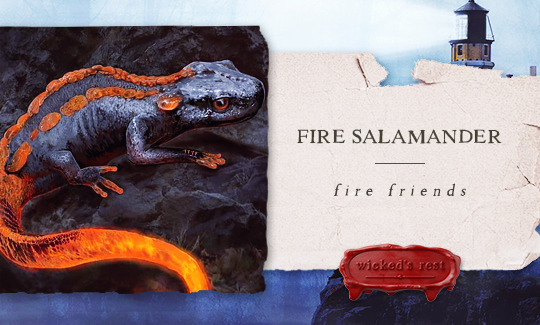
NAME: Fire salamander
RARITY: ★☆☆☆☆
THREAT LEVEL: ★☆☆☆☆ | Harmless aside from some possible burns due to handling.
HABITAT: They can be sighted under leaf litter, in piles of wood, up on trees, and inside peoples’ houses. They like hot, moist environments and sometimes can be recognized by the steam that forms around them when they’re resting somewhere damp and it gets too cold for them. There’s an especially powerful population in Seven Peaks at Daybreak’s Roost.
DESCRIPTION: Fire salamanders are found naturally across most of the globe; they’re one of the most common species of fae, though the average person wouldn’t recognize them as such. Despite their name, behaviors, and appearance, fire salamanders are not amphibians (or salamanders at all). Some people have been known to keep fire salamanders as pets or familiars. A salamander who trusts its owner won’t burn them, but new owners are advised to use heat-proof gloves to handle their little critters at first. Their favorite food? Fireflies, of course.
ABILITIES: Fire salamanders withstand and even thrive in a wide range of temperatures. They emanate heat and are capable of making their skin as hot as fire, burning anyone who touches them and melting or setting ablaze to anything nearby. They have magical qualities that spellcasters may find helpful, and can aid fire elementals who need help focusing their powers. Though not as smart as a person, they’re smarter than actual salamanders and have comparable intelligence to a cat.
WEAKNESS: Though salamanders like moisture, they don’t like water. Dousing them with water could kill them or make them ill. They’re vulnerable to iron. They don’t have any protective abilities or physical means to defend themselves and can be killed with nearly any object. But why would you want to?
OTHER VARIANTS:
Pyrausta: First sighted on the isle of Cyprus, this salamander species has dragonfly wings and more reptilian features. Pyrausta die if separated from a heat source for too long.
(Fire) gecko: Much like salamanders, except their physiology is more similar to geckos. They’re not found in leaf litter, and are more likely to be seen tip toeing across your walls and ceilings. This can leave little scorched marks on them from their hot feet.
#monsters#friendly#magical#woods#populated areas#meadows#mountains#subterranean#pyrausta#fire gecko#fire salamander#fae monster
3 notes
·
View notes
Text
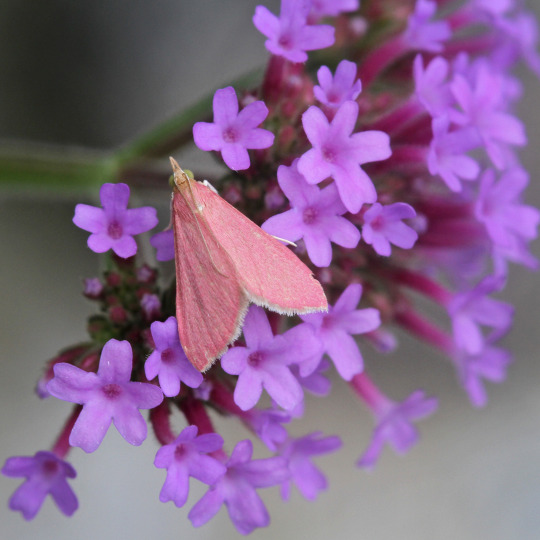
Inornate Pyrausta Moth (Pyrausta inornatalis)
August 7, 2024
Southeastern Pennsylvania
#bug#bugs#photographers on tumblr#Inornate Pyrausta Moth#Pyrausta inornatalis#moth#moths#lepidoptera#insect#insects#entomology#bugblr#animals#nature#wildlife photography
487 notes
·
View notes
Text

Feeding Mint Moth
A mint moth feeding on a forget-me-not flower in the morning sunlight.
#canon#canonuk#fauna#insect#insects#invertebrate#invertebrates#minibeast#minibeasts#mint moth#moth#moths#nature#outdoors#pyrausta aurata#wildlife
113 notes
·
View notes
Text

Teeny weeny moth. The long antenners! Wow!
31 notes
·
View notes
Text

Scientific Name: Pyrausta inornatalis Common Name(s): Inornate pyrausta moth, southern pink moth Family: Crambidae (crambid snout moth) Life Stage(s): Adult Location: Plano, Texas Season(s): Fall
#Pyrausta inornatalis#inornate pyrausta moth#southern pink moth#Crambidae#Plano#Texas#fall#autumn#pink#moth#Lepidoptera#insect#bugblr
35 notes
·
View notes
Text



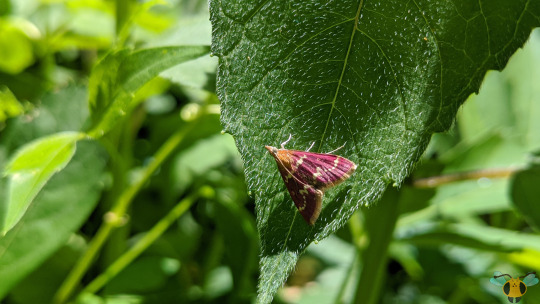
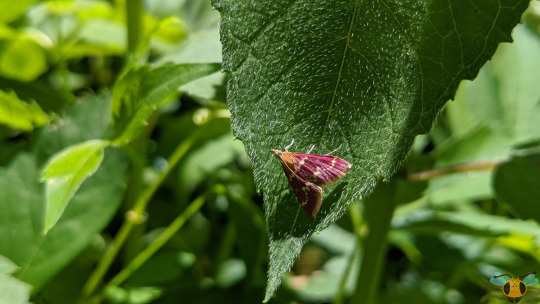


Raspberry Pyrausta Moth - Pyrausta signatalis
It may be a beautiful sight featuring pink-scaled wings and it may fly around during the day, but today's specimen isn't a Butterfly. Rather, it's a familiar specie of snouted Moth (of the large family Crambidae). As mentioned in the previous post featuring this find (nearly 5 years ago, wow), this Moth's "snout" is all of its mouthparts close together. Fortunately for this specie, its mouthparts aren't vestigial, so this Moth can freely sip nectar from any alluring flower that it comes across while flying. Thusly, we insect lovers can enjoy its presence when we see it flitting among the wilderness or darting about a garden as a pink flash. Although it should be excepted to find this Moth hiding away or near flowers, I think this individual may have been searching for something else (more on that below). As a reminder, while its forewings are bright pink with white markings, its hindwings (which are kept tightly under wraps) feature brown-colored scales. You may be able to see them as the insect lands upon a surface. If quick enough with the specimens that you find, see if you can spot a faint "dash" marking which runs across the hindwing. If you see white, then you may be looking at either the Moth's elegant legs or the ventral side of its body.
I'm quite suspicious as today's pink Lepidopteran was found in nearly the same location as the previous one: on leaves that were in close proximity to a certain flower: a series of what I'm guessing are red beebalm plants. In a past post, that flower patch has also been frequented by a roaming Tiger Bee Fly searching for nectar...or possibly a perching area to briefly rest. While nectar is a worthy prize, these Moths sometimes rely on beebalms or similar plants as suitable locations for their Caterpillars to obtain food. From what I've been able to read from both insect guides and gardeners, Raspberry Pyrausta Caterpillars may frequent the leaves of beebalm plants and the innards of the fully developed flowers. I haven't seen one of the pink, grub-like wigglers yet so I cannot ascertain how big a bane they may be to a beebalm bloom and the plant's overall health, but I'll keep an eye out for future posts. Of course, it could just be chance that this Moth was found in a similar location and was just passing through. Admittedly I can only guess on their intentions here; beebalm may be enticing, but there were many other flowers nearby. As a final note, this is one Moth specie where males and females seemingly can't be distinguished by a glance at their thread-like antennae. This observation appears to be very prevalent - if not the norm - among the many species of Crambid Moth.
Pictures were taken on June 9, 2020 with a Google Pixel 4.
#jonny’s insect catalogue#ontario insect#moth#raspberry pyrausta moth#pyrausta signatalis#lepidoptera#insect#toronto#june2020#2020#nature#entomology#invertebrates#arthropods#photography#animals
15 notes
·
View notes
Text
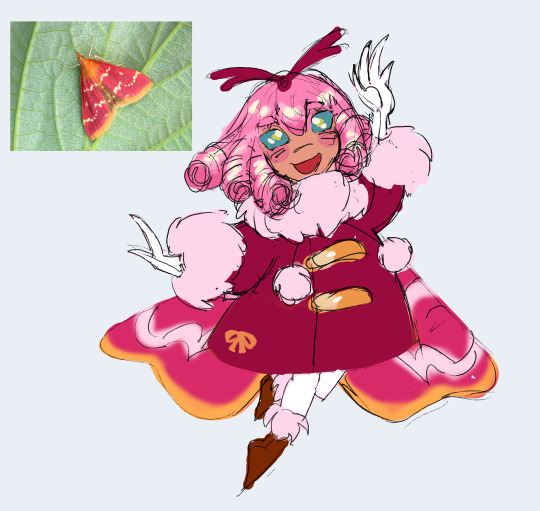
my beautiful daughter who weighs 2 grape exactly(EVERYONE CLAP OR ILL BLOW THIS WHOLE PLACE UP
332 notes
·
View notes
Text

Purplish Pyrausta Moth (Pyrausta purpuralis), family Crambidae, Spain
photograph by Orlando Fidalgo
262 notes
·
View notes
Text
Moth of the Week
Mint Moth
Pyrausta aurata

[Right | Left]
The mint moth is a part of the family Crambidae, the grass moth family. It was first described in 1763 by Giovanni Antonio Scopoli (sometimes Latinized to Johannes Antonius Scopolius).
Description This moth has purple-brown forewings with yellow marks. The marks on the wings varies but is usually one yellow spot near the middle of the wing but leaning closer to the costa (top edge/vein of the wing). It is also common to have smaller yellow marks with the larger spot. It is possible for the forewing to be blank. It is also possible to have yellow markings that look like a wavy band on the forewings. The hindwings are a dark brown or black with a yellow band in the center.
Wingspan: 1.8 - 2 cm (0.71 - 0.79 in).
The caterpillar of this moth ranges from light green, dark green, light brown, black gray and reddish with a darker back line. They also have a dark brown head.
Length: 13 cm (≈0.512)
Diet and Habitat This species most often eats mint (Mentha spicata and Mentha rotundifolia) but also eats plants like marjoram, Salvia pratensis, Melissa officinalis, Nepeta cataria and Calamintha species.
This species is widely distributed in Europe, North Africa, and North Asia. It reaches to Siberia, North China, Korea, and Japan in the east and to Asia Minor, the Middle East, Iran, Afghanistan, Middle Asia and Mongolia in the south. They inhabit chalk and limestone grassland, woodland, marshland, quarries, places with waterside vegetation, and gardens
Mating This moth has two generations a year in north-west Europe. It flies from April until the end of September. Specifically in the UK, it breeds from May to June then from July to August.
Predators This species flies during the day and at night. No listed protections or specific predators.
Fun Fact The mint moth (Pyrausta aurata) can be mistaken for Pyrausta purpuralis as they are related. However, Pyrausta purpuralis is larger and has a more distinct band on the forewing. This band is usually divided in 3.
(Source: Wikipedia [1][2], Butterfly Conservation)
#libraryofmoths#animals#bugs#facts#insects#moth#lepidoptera#mothoftheweek#crambidae#mint moth#Pyrausta aurata#small purple and gold moth#tw bugs
38 notes
·
View notes
Text
Through whoever you've been
through whoever you've been...
Through whoever you'll be
...through whoever you'll be...
Through whatever you lose
...through whatever you lose...
You will always have me
you will always have me
At the end of your rope
at the end of your rope...
I'll be holding you taut
I'll be holding you taut...
I'm gonna be right by your side
No matter what...
#emperor the howdy#pyrausta latter#pom the wally#welcome home au#welcome home multiverse#misfortune eddie au
3 notes
·
View notes
Text


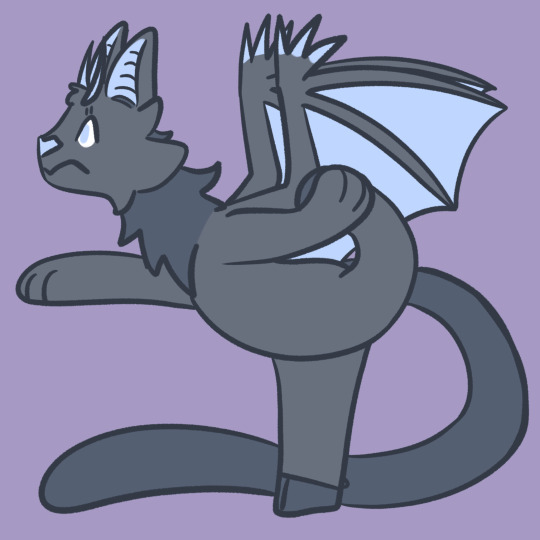

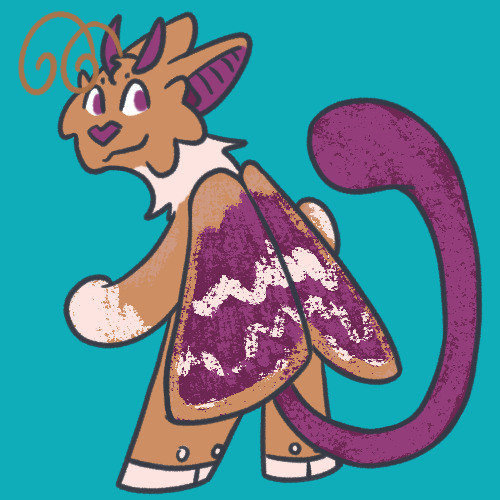
#drawing#digital art#art#oc art#oc#ren#tutelary#tute#moth#butterfly#yea one is corazon inspired#it’s a pink spotted cattleheart#the other is raspberry pyrausta
10 notes
·
View notes
Text

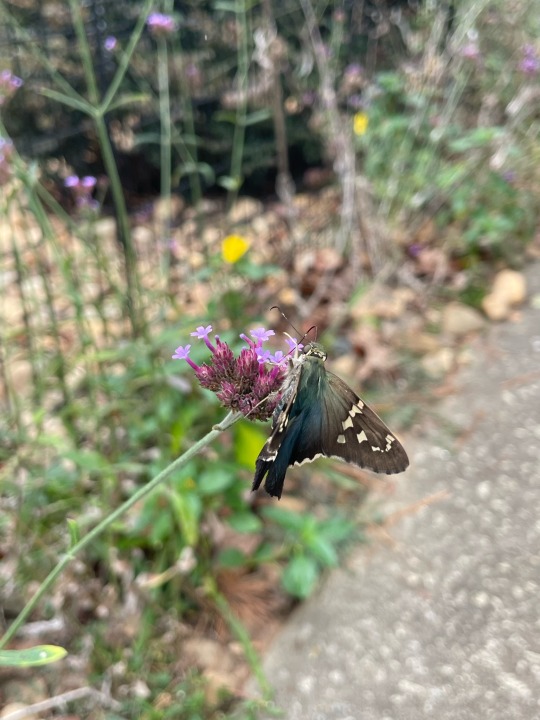
I found a little Inornate Pyrausta moth in the perfect hiding place! A purple lil guy one a beautiful Mexican Sage blossom 🥺 and a Long-tailed Skipper because I am In Love with the teal on their back!!!
#insects#moths#inornate pyrausta moth#long-tailed skipper#butterfly#bugs#amatuer photography#backyard gardens
3 notes
·
View notes